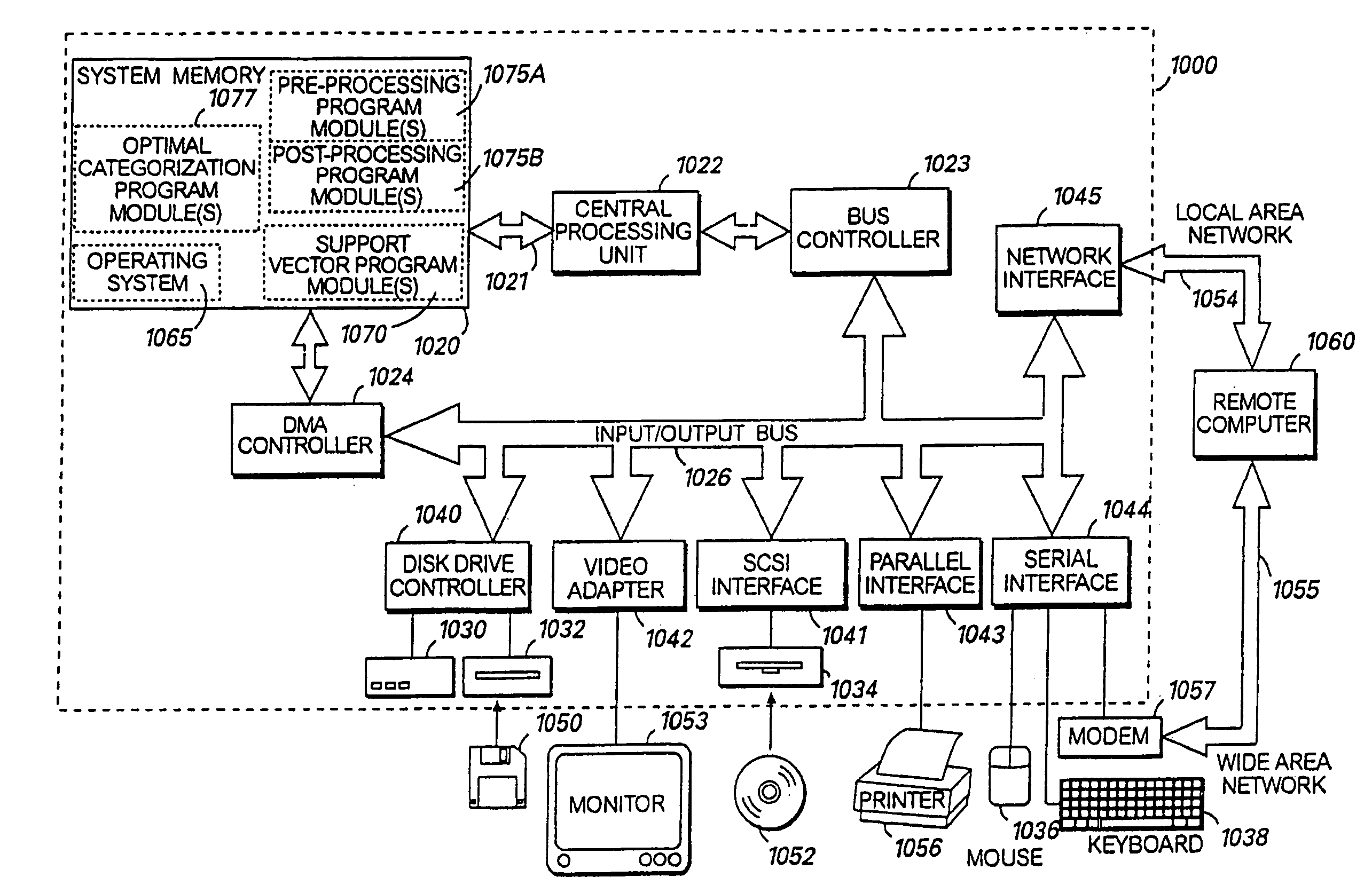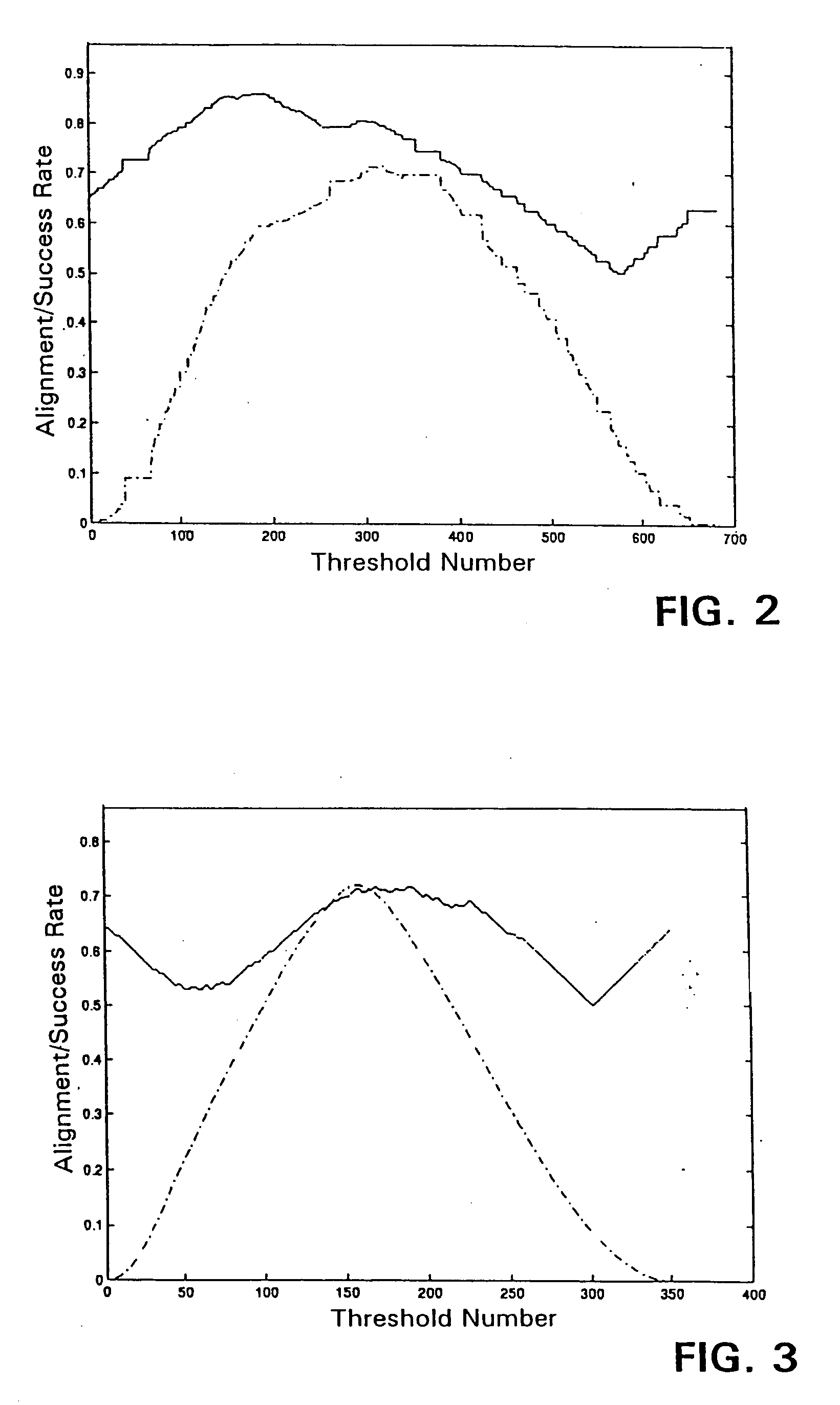Spectral kernels for learning machines
a learning machine and kernel technology, applied in the field of learning machines, can solve the problems of low computational cost of products and implicit complexity of features being used, and achieve the effect of minimizing the cost of a clustering cut and being easy to spo
- Summary
- Abstract
- Description
- Claims
- Application Information
AI Technical Summary
Benefits of technology
Problems solved by technology
Method used
Image
Examples
example 1
[0089] Using the breast cancer dataset, the unsupervised technique was applied with a linear kernel, with alignment being optimized. FIG. 1(a) is a plot of the alignment of the different eigenvectors with the labels in order of increasing eigenvalue. The highest alignment is shown by the last eigenvector corresponding to the largest eigenvalue. For each value θi of the threshold, FIG. 1(b) shows the upper bound of λmax / ∥K∥F (the straight line at the top), the alignment Â(S,k,y) for y=sign(vmax−θi) (the bottom curve), and the accuracy of y (the middle curve). Where actual alignment and upper bound on alignment are the closest, there is confidence that the data has been partitioned well, and that accuracy is maximized. The choice of the threshold corresponds to maintaining the correct proportion between positives and negatives. Another possible threshold strategy is based on the availability of enough labeled points to provide a good estimate of the proportion of positive points in th...
example 2
[0090] Using the same breast cancer dataset as in Example 1, a Gaussian kernel (σ=6) was used. As above, alignment was optimized. In this case, the accuracy obtained by optimizing the alignment was less impressive. For the breast cancer dataset (threshold number 316), the accuracy was about 79.65%, as shown in FIG. 2, where the straight line at the top shows the upper bound of πmax / ∥K∥F, alignment Â(S,k,y) for y=sign(vmax−θi) is shown in the bottom (dashed) curve, and the accuracy of y is plotted in the middle curve.
example 3
[0091] For the ionosphere dataset using a linear kernel and optimized alignment, the accuracy split that optimizes the alignment (threshold number 158) is approximately 71.37%. For each value θi of the threshold, FIG. 3 shows the upper bound of λmax / ∥K∥F (the straight line at the top), the alignment Â(S,k,y) for y=sign(vmax−θi) (the bottom (dashed) curve), and the accuracy of y (the middle curve).
[0092] An overall approach can be used to adapt the kernel to the data. For example, the kernel parameters can be chosen so as to optimize λmax / ∥K∥F. Then, find the first eigenvector, choose a threshold to maximize the alignment, and output the corresponding y. The cost to the alignment of changing a label yi is 2 ∑jyjk(xi,xj)KF,
so that if a point is isolated from the others, or if it is equally close to the two different classes, then changing its label will have only a small effect. On the other hand, labels in strongly clustered points clearly contribute to the overall cost such ...
PUM
 Login to View More
Login to View More Abstract
Description
Claims
Application Information
 Login to View More
Login to View More - R&D
- Intellectual Property
- Life Sciences
- Materials
- Tech Scout
- Unparalleled Data Quality
- Higher Quality Content
- 60% Fewer Hallucinations
Browse by: Latest US Patents, China's latest patents, Technical Efficacy Thesaurus, Application Domain, Technology Topic, Popular Technical Reports.
© 2025 PatSnap. All rights reserved.Legal|Privacy policy|Modern Slavery Act Transparency Statement|Sitemap|About US| Contact US: help@patsnap.com



